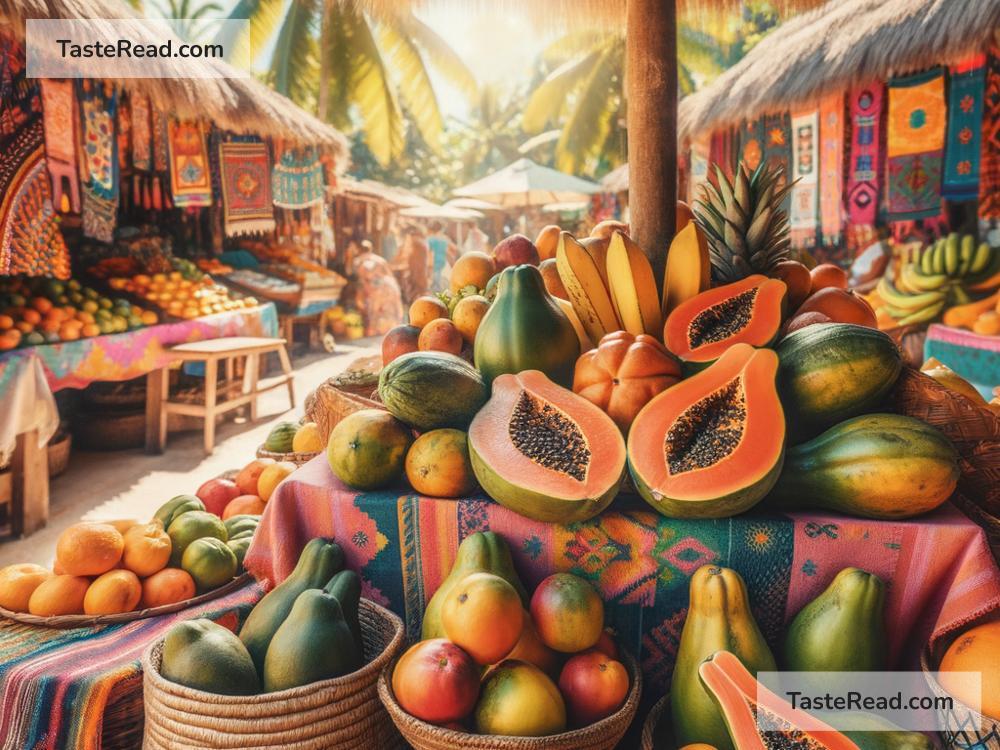The Fascinating Symbolism of Papaya in Caribbean Culture
The Caribbean is a vibrant region known for its sunny skies, turquoise waters, and rich cultural traditions. But beyond the beaches and the music lies a treasure trove of symbolism that shapes daily life. One such symbol is an unlikely star of Caribbean culture—the humble papaya. While it may just seem like a delicious tropical fruit to outsiders, the papaya holds deeper meanings for many Caribbean people. Its symbolism spans across nutrition, history, spirituality, and even relationships. Let’s explore why this fruit is more than just food in the Caribbean.
A Gift from Nature
The papaya, often called the “fruit of angels,” grows abundantly in the warm, sun-soaked islands of the Caribbean. Its vibrant orange flesh and sweet, refreshing taste make it a favorite in local diets. For many Caribbean people, the papaya represents a gift from nature. Its ability to grow easily in backyards, gardens, or even open spaces makes it accessible to nearly everyone. Islanders don’t just see it as a tasty fruit; they view it as a symbol of life’s abundance and the importance of living in harmony with nature.
In addition to its delicious flavor, the fruit carries practical benefits. Packed with vitamins, minerals, and antioxidants, papaya is known for its healing properties. Caribbean people often use it as a natural remedy for digestive issues, skin problems, and overall immunity. The papaya isn’t just nourishment for the body—it’s also seen as nourishment for the soul. Its health-giving qualities highlight the region’s respect for natural remedies and holistic care.
Spiritual Symbolism
In Caribbean culture, fruits often carry spiritual meanings, and the papaya is no exception. Many people associate the papaya tree with resilience and prosperity. That’s because the tree grows quickly, produces fruit consistently, and requires little care—all symbols of endurance and abundance. Seeing a healthy papaya tree can be a reminder of life’s ability to thrive, even in challenging circumstances.
Some Caribbean folkloric traditions even view the papaya as a protective force. For example, folklore may suggest planting papaya trees near homes to bring good luck or ward off evil spirits. In spiritual ceremonies, papaya is sometimes offered as a symbol of gratitude to deities or ancestors, representing the community’s connection to the divine.
Additionally, the seeds of the papaya are worth mentioning. Their slightly bitter taste contrasts with the sweetness of the fruit, making them symbolic of the duality of life—the balance between hardship and joy, struggles and triumphs. In certain cultures, the seeds are ground into remedies or used in traditional practices, emphasizing how every part of the papaya holds significance.
Symbolism in Relationships
Papaya is also deeply linked to relationships and intimacy in some Caribbean cultures. The fruit is often viewed as a representation of fertility and sensuality because of its physical characteristics—a round shape that is often compared to feminine energy and its rich, juicy texture. In this sense, papaya sometimes becomes a gift shared among lovers or newlyweds, representing love, creation, and renewal.
For many families, sharing papaya at the dinner table is an intimate act of connection. Preparing and enjoying the fruit together becomes a way to bond and celebrate life’s sweetness. Caribbean people are known for their emphasis on community and relationships, and the papaya becomes part of these traditions, reinforcing the importance of togetherness.
In some regions, the papaya is also used in rituals surrounding pregnancy or family life. Its association with fertility and growth makes it a fitting part of cultural celebrations that honor new beginnings or expansions in a family. It’s not uncommon for elders to pass down stories or traditions about papayas, creating a legacy of symbolic meaning tied to the fruit.
Papaya in Literature and Art
In Caribbean literature, music, and art, the papaya frequently appears as a metaphor for vitality, beauty, and the sweetness of life. Writers and poets use the fruit’s imagery to evoke themes of love, growth, and prosperity. Its bright orange color becomes a visual representation of the Caribbean’s fiery spirit and vibrant energy.
Caribbean artists often incorporate papayas into paintings, sculptures, and prints to celebrate local identities and traditions. It’s not unusual to see a still life of papayas at a market stall or a farmer holding a freshly picked papaya in a photograph. These artistic works remind viewers of the importance of the fruit in the region’s daily life, all while adding layers of cultural depth.
The Papaya’s Timeless Role
For outsiders, the papaya might just be a refreshing tropical fruit found in smoothies or salads. But for people in the Caribbean, the papaya is layered with meaning. It symbolizes nature’s generosity, spiritual resilience, and the sweetness of life’s connections. It represents growth, fertility, and enduring strength.
Its role in Caribbean culture is timeless—stretching across history, traditions, and contemporary life. Whether it’s being enjoyed at a family gathering, used in a natural remedy, or honored in a work of art, the papaya continues to play a fascinating role in the hearts and minds of Caribbean people. So the next time you bite into a ripe piece of papaya, remember its rich symbolism and the vibrant culture that has turned this simple fruit into an icon of life and vitality.
The papaya is more than a fruit—it’s a story, a connection, and a piece of Caribbean identity.


